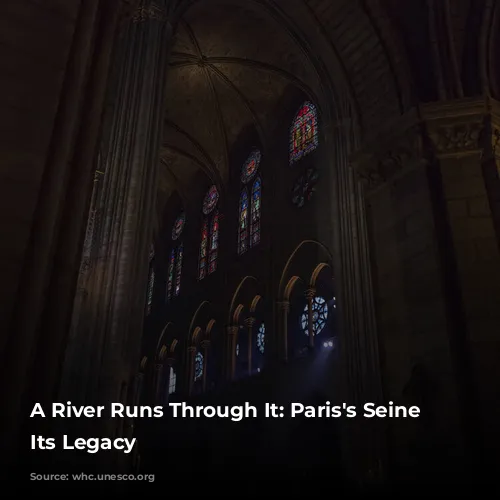Imagine gliding along the River Seine, Paris unfolding before you like a storybook. From the grandeur of the Louvre to the romantic Eiffel Tower, each bend reveals a new chapter in the city’s rich history. This iconic waterway isn’t just a source of beauty; it’s a living testament to centuries of architectural brilliance and urban planning that continue to inspire the world.

Paris, a City Shaped by the Seine
The Seine River is the very heart of Paris, its winding course carving through the city’s soul. Its presence is felt in the carefully crafted quays and bridges, the charming islands of Ile de la Cité and Ile St Louis, and the harmonious blend of historic buildings and modern structures. The river isn’t just a physical feature; it’s a key element in the city’s design, guiding the flow of streets and shaping the character of its various districts.
Imagine strolling along the banks of the Seine, the iconic Notre-Dame Cathedral standing guard, its Gothic spires reaching for the sky. Nearby, the Sainte Chapelle, a masterpiece of medieval architecture, whispers tales of faith and artistry. As you drift downstream, the spirit of the Renaissance greets you in the elegance of the Pont Neuf. The harmonious layout of the Marais and Ile-Saint-Louis districts showcases the sophistication of 17th and 18th-century Parisian urban planning, while the majestic Louvre Palace, the Invalides, and the École Militaire reflect the grandeur of French classicism.
The Seine, however, is not just a museum of history; it’s a canvas for the future. The iconic Eiffel Tower, a symbol of Paris and iron architecture, stands as a testament to the city’s innovative spirit. The 19th and 20th centuries saw the evolution of the Seine’s banks, with the grandiose Universal Exhibitions leaving their mark. The wide avenues and squares designed by Haussmann during Napoleon III’s reign influenced urban planning worldwide, shaping the skylines of cities far beyond the banks of the Seine.
A Legacy of Architectural Masterpieces
The Seine’s banks are a breathtaking panorama of architectural wonders, each echoing a different era and a different story. Notre-Dame and the Sainte Chapelle stand as iconic examples of Gothic architecture, their soaring spires and intricate details inspiring generations of architects. The Louvre and Palais de l’Institut are testaments to the classicism of the Renaissance, their balanced forms and grand facades reflecting an era of intellectual and artistic flourishing.
The Seine’s influence goes beyond Paris itself, shaping the urban landscape of the world. The Place de la Concorde and the perspective offered by the Invalides inspired the layout of European capitals, while Haussmann’s urban planning, with its broad boulevards and grandiose squares, shaped the modern cities of Latin America.
A River’s Story, a City’s Soul
The Seine’s story is deeply intertwined with the evolution of Paris. From the earliest settlements along its banks to the modern metropolis that thrives today, the river has been both a source of life and a symbol of the city’s enduring spirit. The Seine tells a story of innovation and adaptation, of cultural exchange and artistic brilliance. It’s a story that continues to unfold with each sunrise, each new chapter written in the language of architecture, urban planning, and the vibrant life that flows through the city’s veins.
